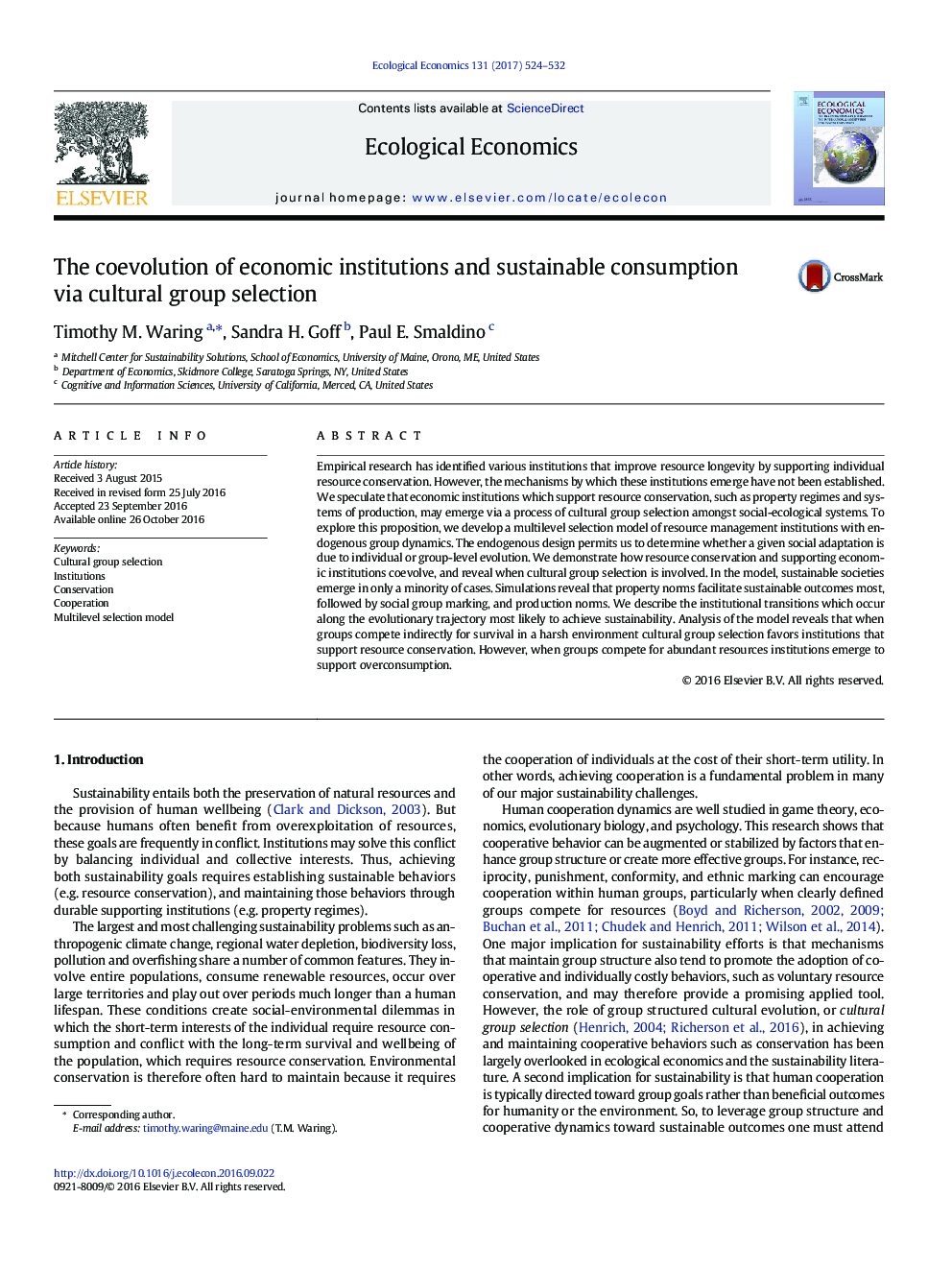| کد مقاله | کد نشریه | سال انتشار | مقاله انگلیسی | نسخه تمام متن |
|---|---|---|---|---|
| 5048892 | 1476348 | 2017 | 9 صفحه PDF | دانلود رایگان |
• We use a multilevel selection model to study the evolution of sustainable resource management institutions and behaviors.
• Individuals have property, production, and consumption norms. Evolving social markers allow groups to form endogenously.
• Conservation behavior and supporting institutions arise primarily when groups compete indirectly for longevity.
• Sustainable outcomes require exclusive property regimes, which emerge most through group structured cultural evolution.
Empirical research has identified various institutions that improve resource longevity by supporting individual resource conservation. However, the mechanisms by which these institutions emerge have not been established. We speculate that economic institutions which support resource conservation, such as property regimes and systems of production, may emerge via a process of cultural group selection amongst social-ecological systems. To explore this proposition, we develop a multilevel selection model of resource management institutions with endogenous group dynamics. The endogenous design permits us to determine whether a given social adaptation is due to individual or group-level evolution. We demonstrate how resource conservation and supporting economic institutions coevolve, and reveal when cultural group selection is involved. In the model, sustainable societies emerge in only a minority of cases. Simulations reveal that property norms facilitate sustainable outcomes most, followed by social group marking, and production norms. We describe the institutional transitions which occur along the evolutionary trajectory most likely to achieve sustainability. Analysis of the model reveals that when groups compete indirectly for survival in a harsh environment cultural group selection favors institutions that support resource conservation. However, when groups compete for abundant resources institutions emerge to support overconsumption.
Figure optionsDownload high-quality image (321 K)Download as PowerPoint slide
Journal: Ecological Economics - Volume 131, January 2017, Pages 524–532
